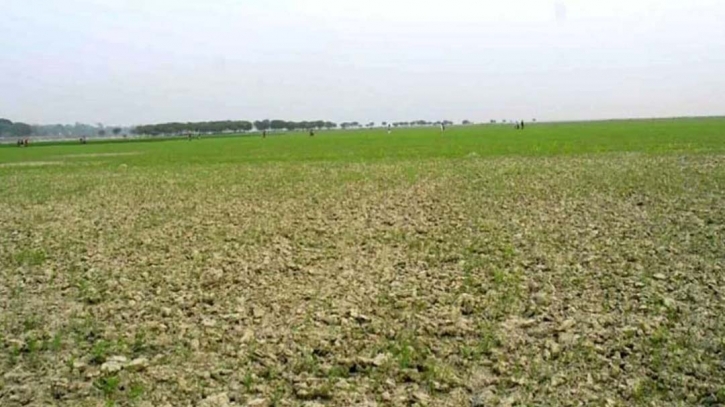
Staff Correspondent, Dhaka
The water flow of the Padma River is declining abnormally, causing its mainstream and tributaries to dry up, which is impacting the environment in the drought-prone Barind tract.
Experts have indicated that the entire northern and southern regions of the country, particularly the vast Barind tract, are experiencing ecological disorder due to the gradual dropping of the Padma water level.
Prof Redwanur Rahman of the Institute of Environmental Sciences at Rajshahi University (RU) said that the water level is rapidly reducing, reaching its lowest mark during the current dry season.
This has resulted in the emergence of a large number of sandbanks in the riverbed.
The river now has the lowest water flow in some channels, hampering navigability throughout its courses, both upstream and downstream.
Normal water flow in the river is now visible only for three to four months a year, she added.
During the rest of the year, the water level drops to its lowest point, creating long sandy charlands across the river, which makes the living conditions and livelihoods of people in the char areas vulnerable.
Prof Rahman mentioned that if this declining trend continues until the monsoon begins in July, it could lead to a more disastrous situation in the northern and southern regions.
The groundwater level in the vast Barind tract is also rapidly declining, rendering hand-driven tube wells non-functional.
Prof Mizanur Rahman of the Department of Geography and Environmental Sciences at RU explained that the drying up of the river has led to a drop in the underground water level, severely affecting irrigation.
The traditional livelihoods in the river basin have also been threatened by disruptions to navigation, the environment, and biodiversity.
He warned that if the trend continues, desertification in the region would intensify, potentially causing a catastrophe in the agriculture sector.
This situation is further worsening the adverse effects on people whose livelihoods largely depend on agriculture, particularly rice production, he added.
Many water bodies, including canals, ponds, and other wetlands, have dried up due to the disappearance of surface water, creating a disastrous situation for the irrigation sector.
Prof Rahman emphasized that the recharging process of groundwater is being severely impacted by the shortage of surface water.
Experts have declared that the Padma is now a dead river, with more than 25 tributaries having dried up due to the lack of water flow.
Many other tributaries have lost their courses, making them unsuitable for habitation or cultivation.
In response, officials from the Barind Multipurpose Development Authority (BMDA) are concerned about the proper functioning of deep tube wells during the current IRRI-Boro season.
The region has played a vital role in ensuring food security and socio-economic stability, said BMDA Additional Chief Engineer Abdur Rashid.
He emphasized the importance of maintaining the sustainability of the Barind irrigation sector to ensure unhindered food production.
To reduce dependence on deep tube wells, he mentioned that farmers are being encouraged to grow less water-intensive crops as alternatives to water-intensive Boro paddy.
He also stressed the need for immediate attention to rainwater harvesting to ensure a sustainable water supply throughout the year.





































